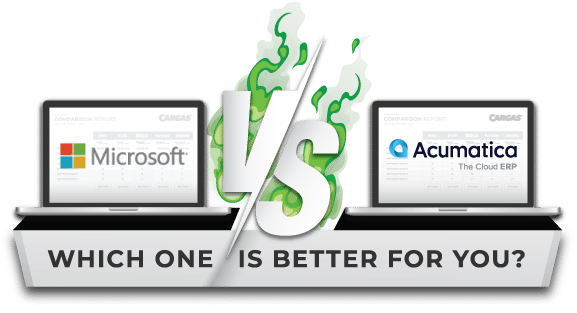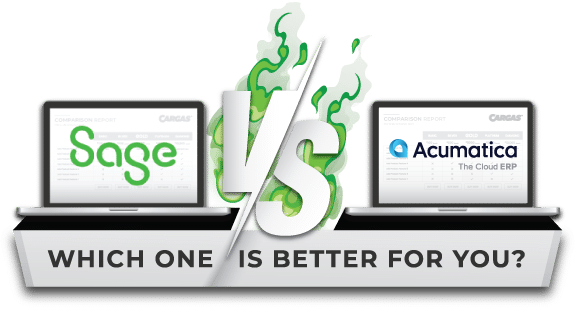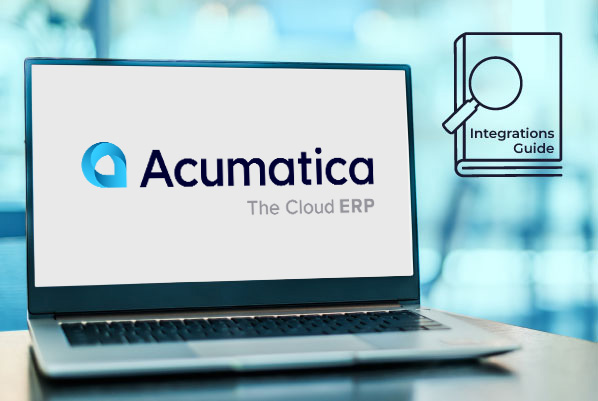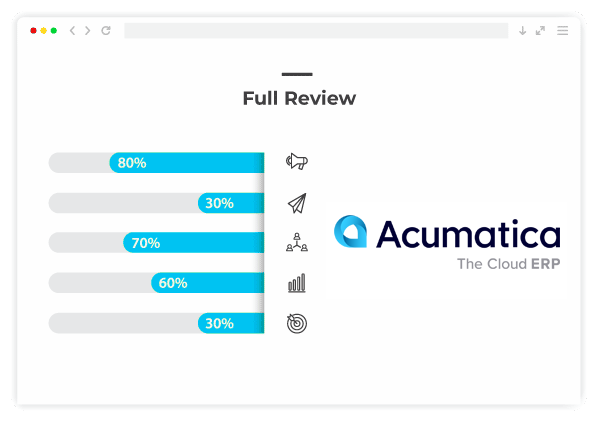COMPARISON | 5 MIN READ
Microsoft Dynamics 365 Business Central vs. Acumatica
Compare these two leading ERP solutions

TABLE OF CONTENTS
Compare Microsoft Dynamics 365 Business Central vs Acumatica with our detailed article about these two software, if you want to take a deeper dive with more in-depth content. Unlock the Microsoft Dynamics 365 Business Central vs Acumatica side-by-side comparison report. These two software are leading ERP solutions with overlapping features and functions. While these solutions share some capabilities, several key differences may make one a better fit for your business.
Specialized vs. Suite Software
What role do you want your ERP software to play in your business? If you’d prefer suite software that covers all areas of your business, Acumatica is a great choice. Or, if you love your current Microsoft solutions for sales, marketing, and productivity and want to invest in powerful ERP software, you might want to opt for Business Central.
Alongside its general business features, Acumatica offers specialized editions with focused functionality in specific areas, including distribution, manufacturing, retail, professional services, and construction. Acumatica is a suite solution, which means most features are built into the software and it’s more complete out of the box. However, some of this advanced functionality comes at an additional cost.
Suite software covers multiple departments, but such a breadth of features might be too much for certain organizations. Software like Microsoft Dynamics 365 Business Central offers deep operational functionality in specific areas and is built to work in harmony with other Microsoft solutions such as Dynamics 365 CRM, the Microsoft 365 productivity suite, and the Power Platform.

Compare Software Features
- Finance Management
- Sales & Marketing
- Sales & Delivery
- Purchasing & Payables
- Inventory
- Supply Planning & Availability
On the other hand, Acumatica provides a versatile range of core functionalities:
- Finance Management
- Customer Management
- Reporting & Dashboards
- Project Accounting
- Payroll
- Mobile Features
If you’re eager to explore additional core and advanced module features offered by Business Central and Acumatica. Unlock our comparison report is the perfect resource for you. Explore a detailed side-by-side comparison report.
How would you like your ERP to integrate into your current software environment? Each software provider has a marketplace full of integration options, but the types of add-ons you’ll find will differ.
Business Central is a natural fit for your existing system if you already use Microsoft products. It works with the other apps in the Dynamics 365 portfolio (like Sales and Customer Service), plus tools like Power BI for analytics and Power Automate for custom workflows across applications. Business Central also integrates with Microsoft 365 apps like Outlook, letting you accomplish ERP tasks in connected applications without opening Business Central.
Acumatica is designed to be a unified platform for business operations, but sometimes teams require specific solutions or custom features. In those instances, Acumatica has a marketplace full of third-party apps that integrate with the base suite software. The marketplace’s modules range from warehouse and sales order management to supply chain planning and even a variety of productivity tools and online education.

Sum It Up
Acumatica is a suite solution with industry-specific editions and broad capabilities designed to cover all areas of business. Users can add functionality by purchasing additional modules or exploring third-party integrations. Acumatica uses a resource-based pricing model, so organizations pay for the number of transactions processed, not the number of people using the software.
Dynamics 365 Business Central offers full ERP functionality, including manufacturing and distribution capabilities, at an advantageous price. Business Central integrates well with other solutions, including Microsoft products and third-party applications. The monthly subscription price depends on the number of users, so the cost is predictable and includes unlimited transactions.
At Cargas, our expert consulting team specializes in ERP solutions, including Microsoft Dynamics 365 Business Central and Acumatica. If you’re trying to understand which solution is a better fit for your business, we’d love to help. Let’s connect to talk about your needs and what you’re looking for in a software solution.
Business Central vs. Acumatica Comparison Report

Take advantage of our side-by-side comparison report by entering your information: ►

Let’s Chat
Still have questions? Get in touch with our expert team of software professionals.


